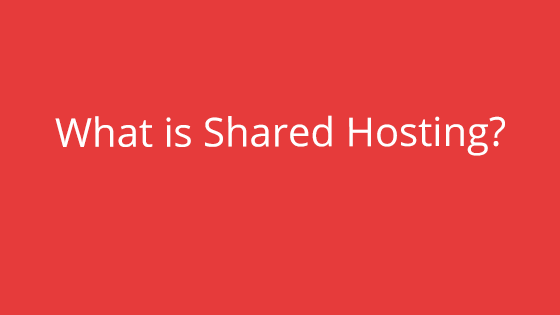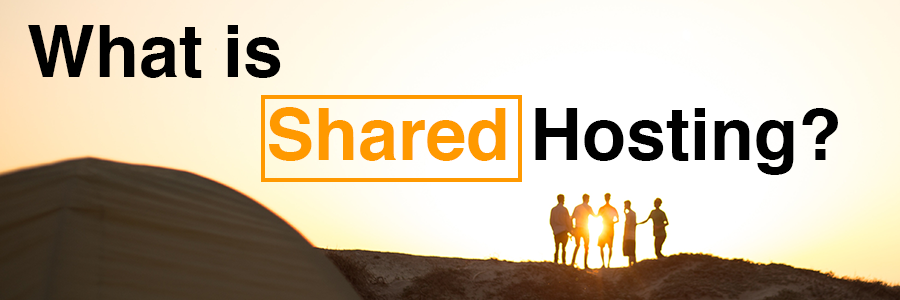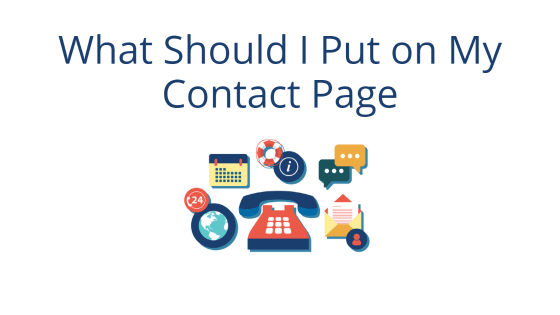What is Shared Hosting?
Shared hosting is an inexpensive hosting option directed at beginners and modest websites. Is shared hosting right for you? How do you find a quality shared hosting package? We’ll walk you through the basics in this blog.
How Does Shared Hosting Work?
Our first step to assessing whether shared hosting works for you is to explain how it works. It’s called shared hosting because there are many shared accounts on one physical server. The server may be shared, but that’s the only shared thing. Only you can access and manage your account and site(s). You can have a dedicated domain on a shared hosting account, too. The only part that’s shared on a shared hosting account is the physical hardware. All the accounts on the server are allotted a certain amount of resources on the server.
Because the account is just one of many on a single server, shared hosting packages are typically very inexpensive. Also, because you’re sharing a server with other people, the hosting company typically takes care of all server maintenance.
What is Shared Hosting Best Suited For?
Because shared hosting servers are managed by the hosting company, shared hosting is a great option if you would prefer your sole focus to be on your site. Shared hosting is also a great option for new websites and those with a modest following. They’re inexpensive, with hands-off server maintenance.
However, if you are a hands-on person or have an established website with a major following, you may want to checkout VPS as a hosting type, instead.
Finding Quality Shared Hosting
To find a quality shared hosting package, keep the following points in mind.
Shared Hosting Size
The first thing to look for when searching for a quality shared hosting package is size. It won’t matter whether your hosting package is the highest quality possible if it doesn’t have enough size to support your site’s needs.
Hosting companies often offer multiple shared hosting packages for different site needs. Make sure you know the size of your site and look for a package that will be able to support its size.
Upgrading and Downgrading
Also, think about your site’s potential size. What if it grows or shrinks? Check out your potential web host’s upgrade and downgrade options because you may eventually be going through the process. You should also check the hosting company’s policies. Make sure they won’t force you to move your content if you’re happy with a smaller hosting package. Even if we recommend bumping up to the next package, if the allotted resources are too small for you, but you want to stay or leave on your own terms, pair Networks won’t make you upgrade to a larger, more expensive package. Other hosting providers may not be so understanding.
Hosting Support
As with most hosting packages, you should check out the hosting company’s support system. Make sure you can communicate with their support team how you want to and when you want. Quality hosts offer 24/7 support by both email and phone. When do you primarily work on your website? Is it weekends? Late at night? Holidays? Make sure the potential hosting company’s support team functions during those times, because that’s likely the time you will run into any questions or problems.
WordPress and Weebly
Do you want to use a website builder, like WordPress or Weebly? If so, make sure the hosting package you’re considering supports it. There are even hosting options that support both! pair Networks shared hosting supports WordPress installations with pairSIM and even Weebly’s drag-and-drop builder. Having a hosting package already set up with compatibility will save you headaches down the road.
Custom Email Capabilities
Does the hosting package you’re looking at come with custom email addresses? If it’s something you’re interested in, you should look for a shared hosting package that includes custom email address creation. If not, you may have to spend money on a separate hosting just for custom addresses. Also, take into consideration how many custom addresses your site will need. You don’t want to find out a few months in that you need more custom addresses and have to upgrade your package or buy separate hosting for more.
Do you plan on having mailing lists? Make sure the hosting company has the features in place for mailing lists. If your hosting company doesn’t give you an option to put together a mailing list and you try to just send out a mass of emails, your address might get tagged as spam. This can be annoying to fix and can potentially hurt your site’s credibility.
Some companies offer internal mailing lists, like pair Networks has pairList, that will allow you to send out a mass amount of emails without worrying about being tagged as spam. We advise looking for a hosting package that has such a feature if you plan on sending out mass emails, like a newsletter. That way, you’ll never have to worry about your mailing lists.
Number of Domains
Also, check the number of domains the package allows you to have. Some companies will limit how many domains you can have per account. However, there are hosting companies out there, like pair Networks, that gives you unlimited domains per account.
Bandwidth
Bandwidth, also referred to as “monthly transfer,” is the measure of the data that passes between your site visitors and your server. The more visitors you have on your site, the more bandwidth you will use. For shared hosting, you are given a certain amount of bandwidth.
So, when looking for a hosting package, you need to take into consideration your audience. How much traffic does your site usually receive? Depending on your answer, you may find that shared hosting is either a great choice or a risky one.
Also, take into consideration that type or site you are hosting. If you plan on doing something bandwidth-intensive, like video-streaming, you may want to consider a VPS instead of shared hosting. If on the other hand, your website is simple or just starting out, shared hosting may be the perfect package for you.
Shared Hosting Search Tips to Remember
So, when selecting a shared hosting package, remember to compare the size of your site, bandwidth, the support type and availability, domain limits, and custom email addresses. Shared hosting is a great place to start out, especially if this is your first website. With its inexpensive pricing and the server maintenance being handled by the hosting company, a shared hosting package allows you to get your feet wet. Once your site has picked up momentum, gained greater site traffic, and perhaps upped its complexity, you can move to larger shared hosting packages, or perhaps upgrade to a VPS or Dedicated hosting package.
If you’re still undecided about what hosting package would work best for you, read our blog on VPS Hosting or subscribe for updates on our blog series about hosting packages.







